There are others who are not remembered,
as if they had never lived,
who died and were forgotten,
they, and their children after them.—Sirach 44:9
Alabama, the place in Andrew Moore’s photos, my home, is not exotic. But it is the subject of endless fascination. Sometimes Alabama is a punchline, or a word used to provoke horror. I have seen pages of words and pictures filled with my birth state, an abundant canvas for the American imagination, many times—the work of artists and poets, writers and intellectuals. This prolificity is, at least in part, because Alabama is the imagined grounds for our national shame, a heady mix of poverty and violence: guns, lynching, beatings, and, most of all, racism. Slavery! Alabama might be the true heartland of America after all.
Despite so many treatments, precious and rare are the images and essays about Alabama that I recognize as belonging to my home; rare are the depictions that avoid falling into a funhouse mirror or a voyeur’s imagination of the “dirty South.” There is a lot of looking without seeing.
Blue Alabama is different. This book is true to my home.
That’s not a small thing for me to say. The gift, as I see it, in Moore’s artistry is more than his brilliant mastery of composition, color, and emotion. It is also in his ethics. Each page is a frame, with a story that goes with it, and reaches beyond it. Moore instructs us as we look into the frame. Windows and doorways are everywhere. He tells the viewer: You are crossing a threshold. And we all know that any visitor who is respectful crosses a threshold with care. Looks without toppling. Sees without harsh judgment. He’s a tactful, though curious, and mindful observer.
On the other hand, Moore isn’t too polite. If he were we would have a book filled with tidy happy-go-lucky photos that would clearly be a lie. Instead, this visitor is a keen and truthful observer. Moore is telling us who and what remains in the aftermath of a social revolution.
Alabamans live with the detritus of history. Junk accumulates in yards and in lives, because we need to preserve. That is the cross a poor state has to bear. It is also its underbelly. Because of course the preservation of a slave and Jim Crow past follows right along with keeping the baby and the bath water. And so, a picture of an old auditorium in a segregated school sets me to weeping. The training ground for the color line lies fallow, and yet it is present.
The past haunts, but Alabamans do not live in the past. So here lie the ancestors and here walk their descendants: Confederates and bondspeople. Today, there is an image of an auction block where black folks are selling and not being sold. The brocades and flourishes of homes that belonged to the plantation gentry are in decay. The overgrown underbrush spreads over an abandoned jail and empty homes. Generations of pollution settle in the lungs and under the skin. The edifices, once built by black hands, of the unfree, bound, and contained, are sinking and fading, but still here.
Those builders of the past are long dead, but working with one’s hands, a lost art in many corners of the United States, is still prevalent, even essential, in the rural Deep South. Horses, tractors, and trucks are labor companions. The hickory factory depletes the earth and feeds the people. There is a working woman with a shirt reading: New York, Paris, Milan. She is brown like me and wears the exact same purple polyester bonnet I sleep in each night. I can fairly hear her voice. And the sounds of snapping collard greens, toppling bricks, and tended-to chickens.
Efforts aren’t all backbreaking. A drill team practices its meticulous choreography, a labor that has joy as its sole purpose. A basketball court of a historic black school sits in the middle of a field, encroached by grasses on every side. And we are reminded that the greenery always threatens to take over. Alabama is lush.
There are images in this book that will feel familiar to anyone who remembers the story and portraits of white-tenant-farmer Alabama made by James Agee and Walker Evans. But Moore’s is a full-color rendition, in more ways than one. Black and white, intimate and separate, these are vivid country folks. I see the visual coloratura, the heat radiating off the page, and I’m right back under the shoulder-stinging Alabama sun, perhaps the most familiar climatic sensation of my early life.
If one were to call Alabama by a single color, you might think the best choice would be red-brown, like its dirt, or loamy black like its best soil. Or white like its fences. Or any of the three, like its people. But blue is right. Blue skies, blue denim, blue faded scraps for quilts, the robin’s egg blue paint in portraits and on walls, muted and resilient. Blue is the hue of a fire so hot that its color has to turn cool.
And to that point, you will see in these photographs that the struggle for racial justice is not over in Alabama’s Black Belt. Their captions recount the long struggle for voting rights, civil rights, and economic opportunity for Alabama’s African American people. And the uncertain position of its white folks. There is an uneasy truce, across the gulf of the color line, when it comes to past and future. Sensitivity reigns over judgment in these photos. I’m glad. The simple truth is a better guiding light to freedom anyway.
Imani Perry is the Hughes-Rogers Professor of African American Studies at Princeton University. Her sixth book, Breathe: A Letter to My Sons, will be released on September 17.
All photos by Andrew Moore, from Blue Alabama.
from The Paris Review https://ift.tt/32BumxJ
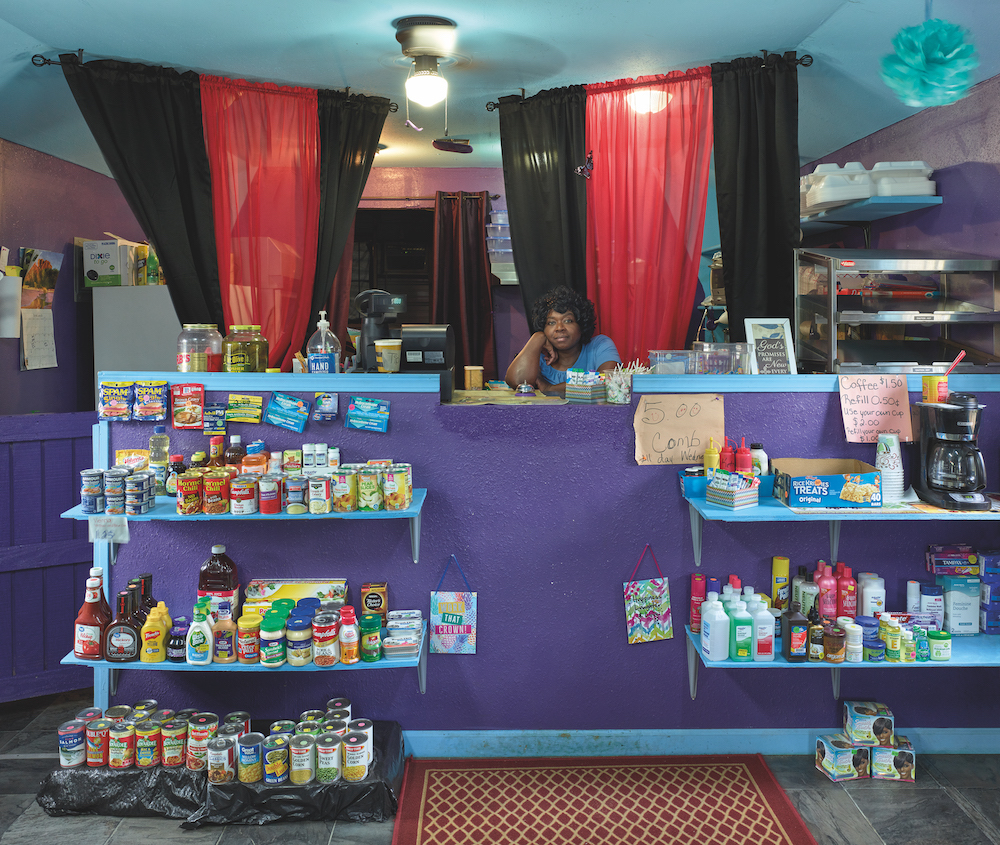
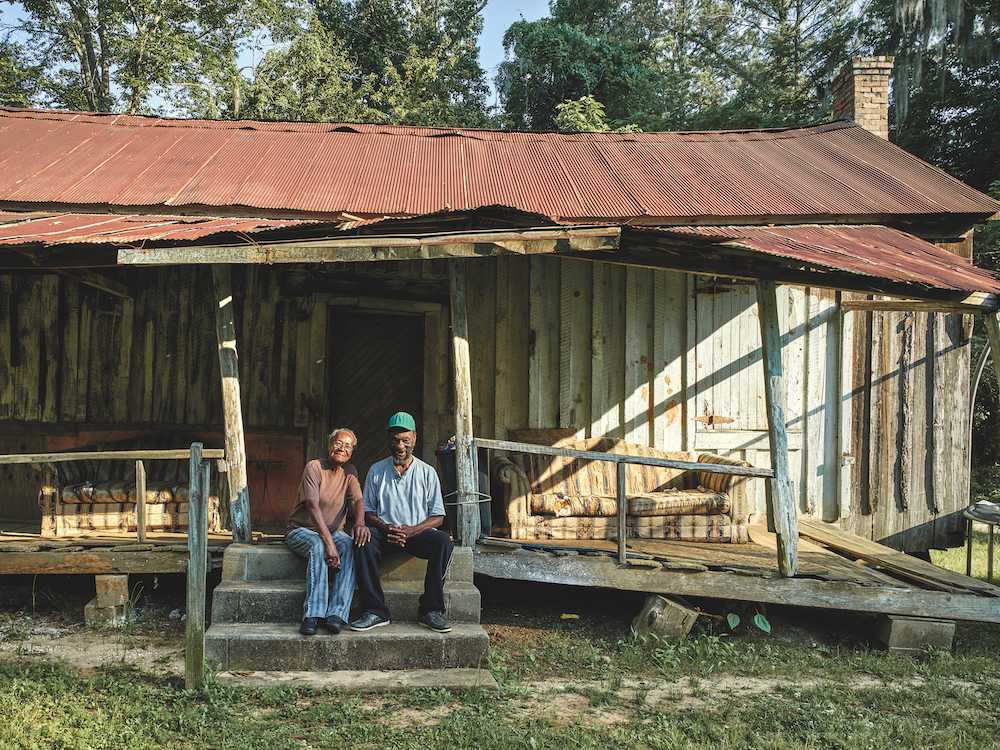
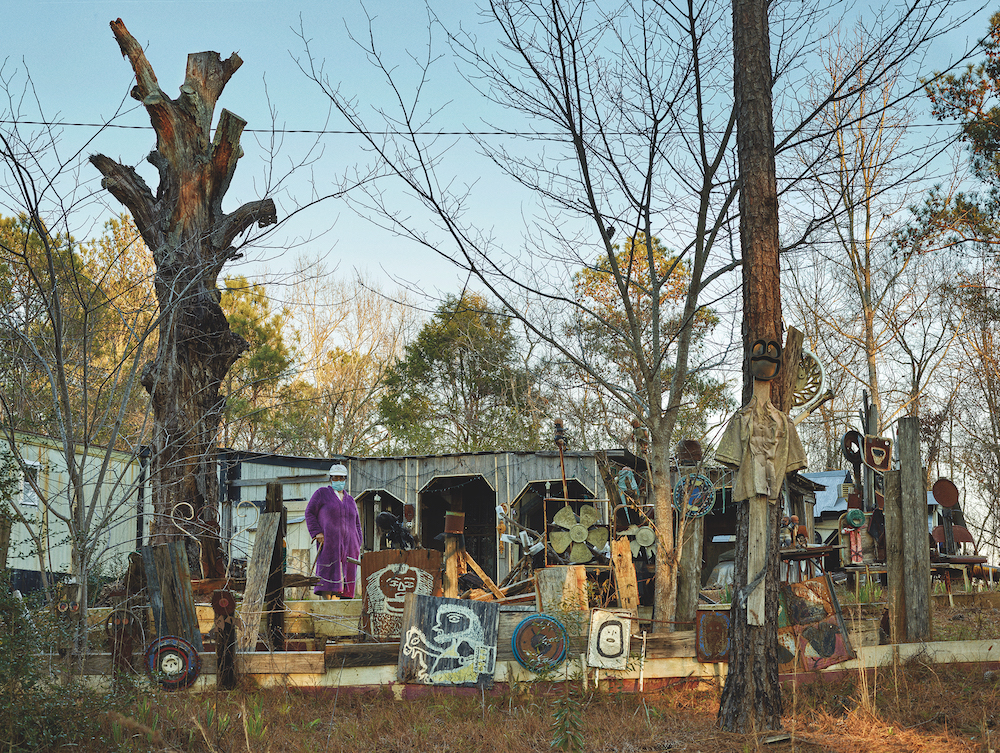
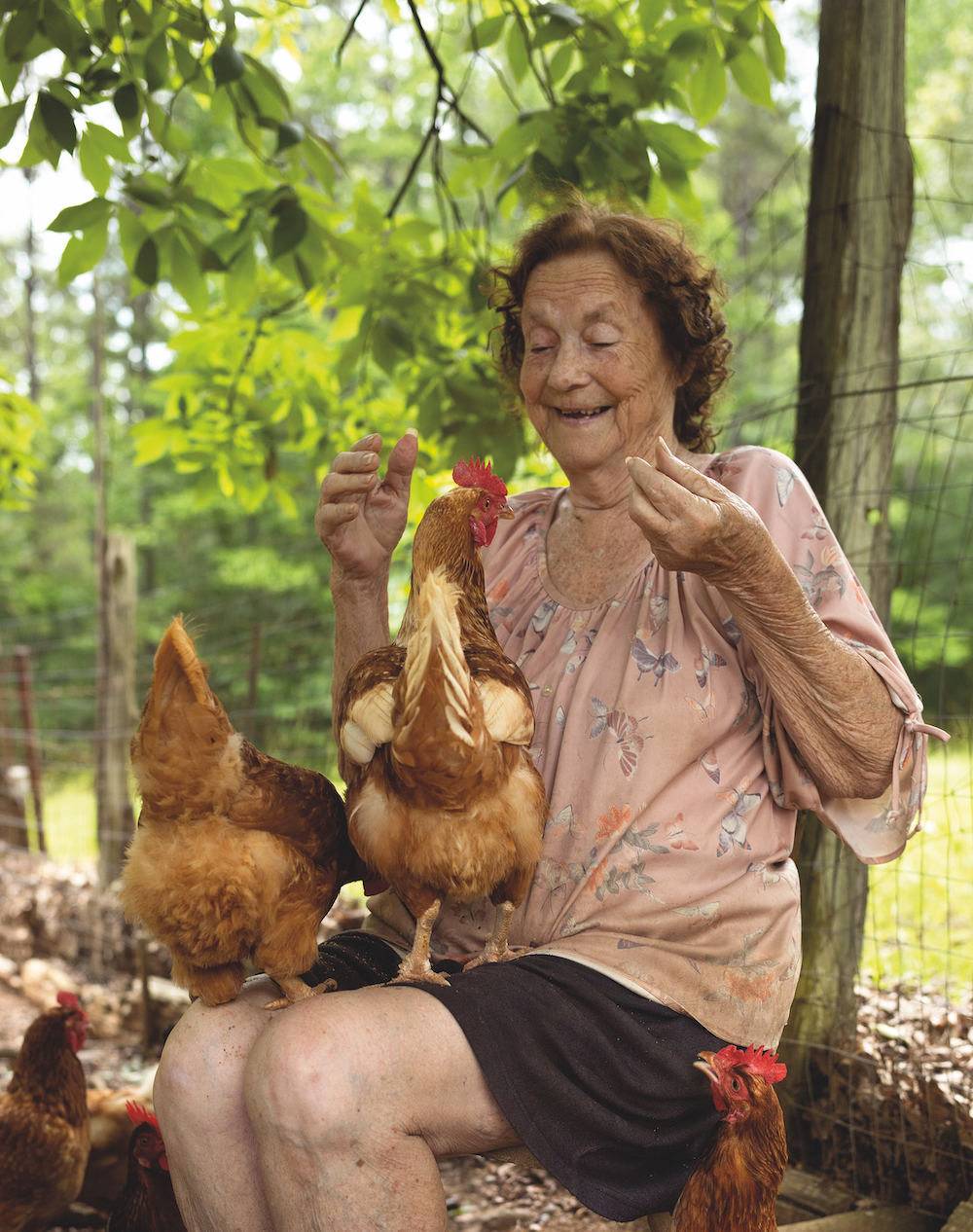
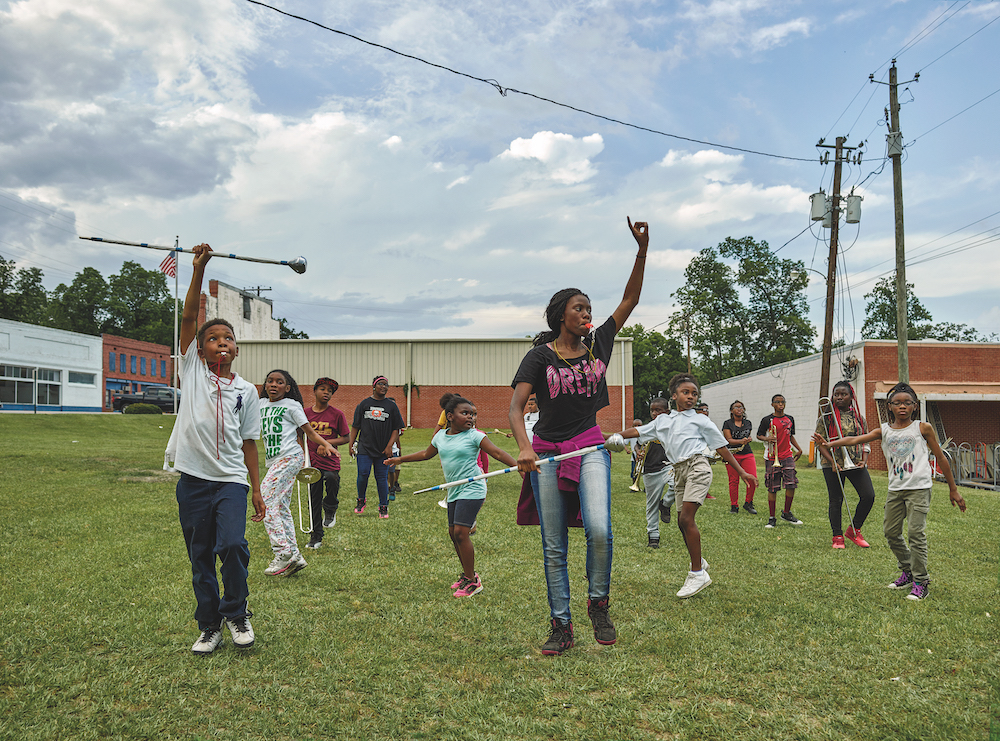
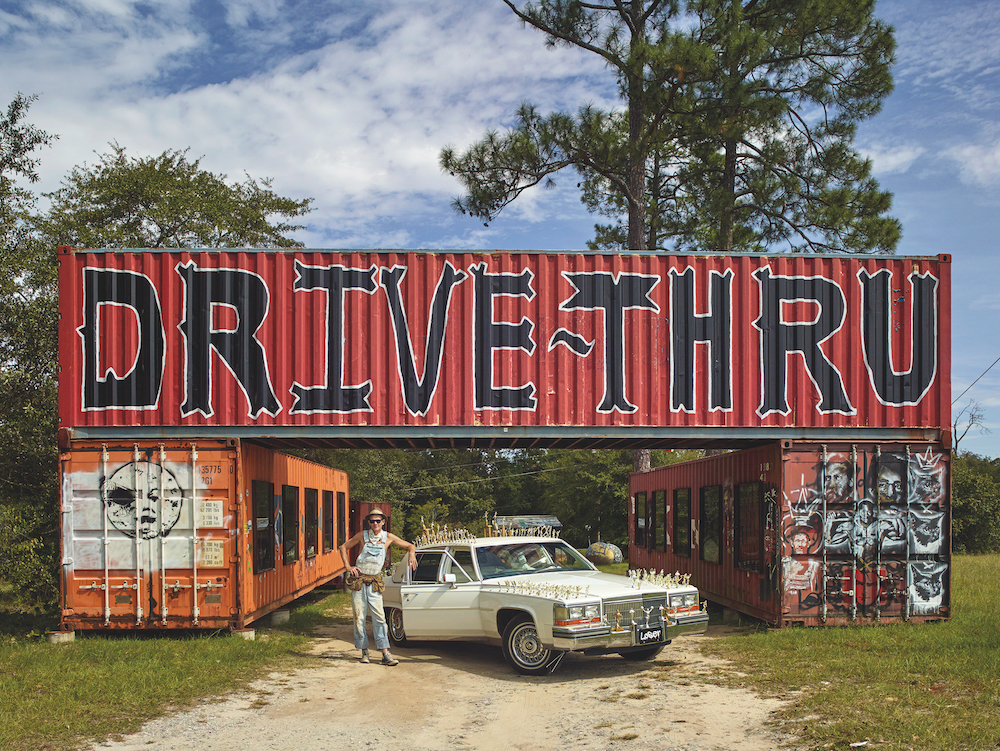
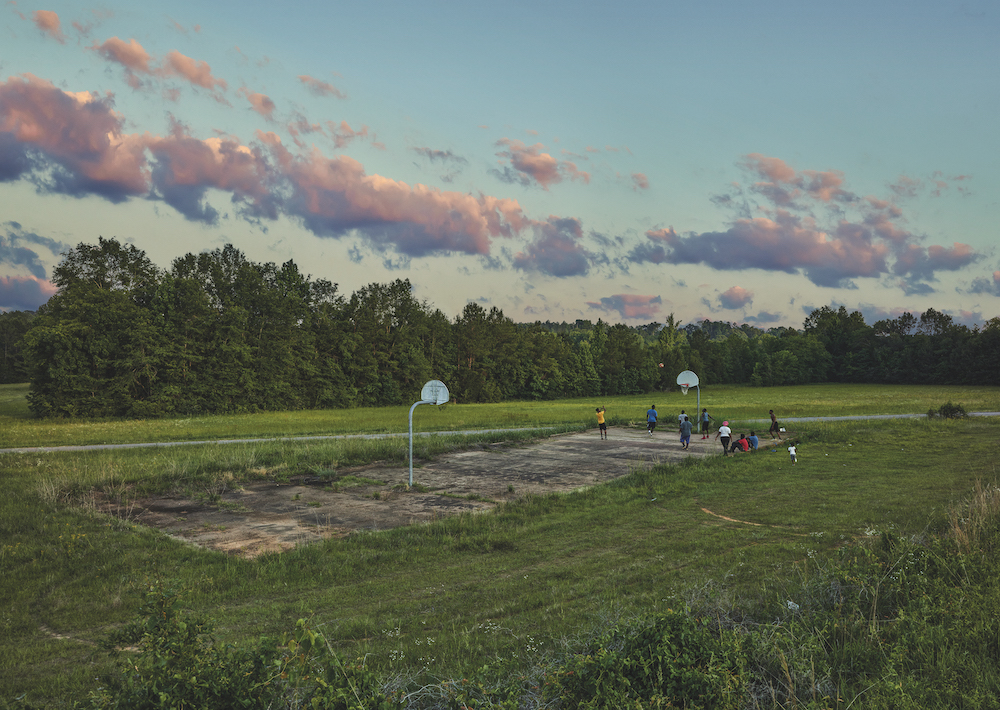
Comments
Post a Comment